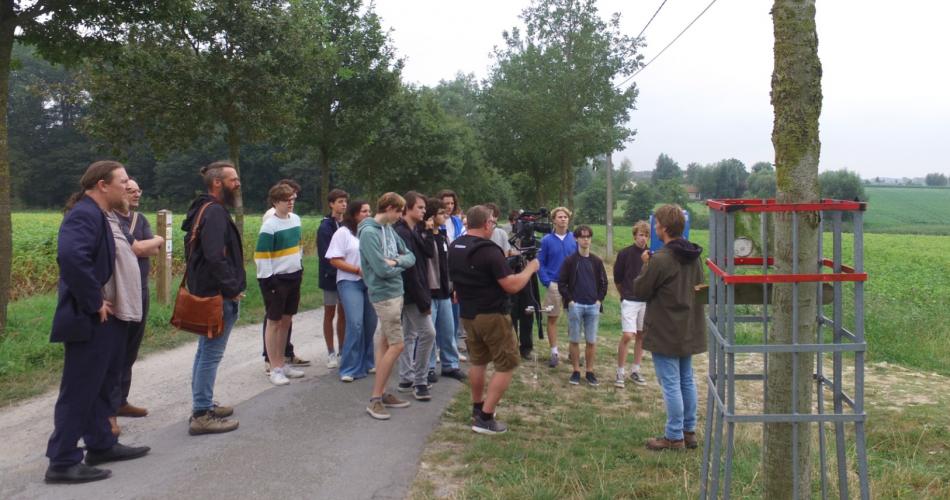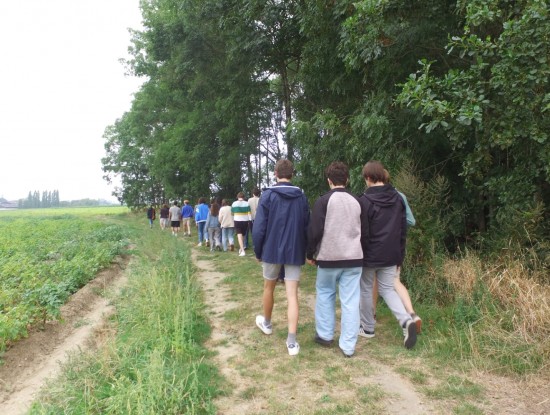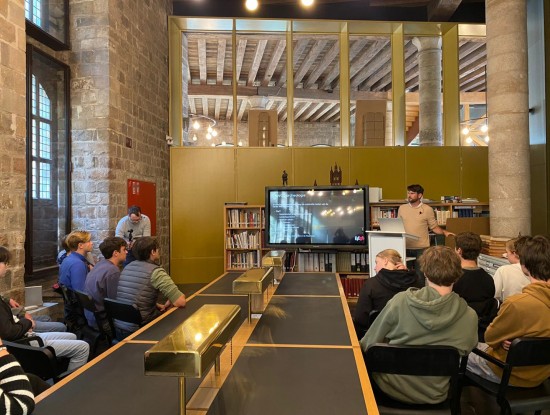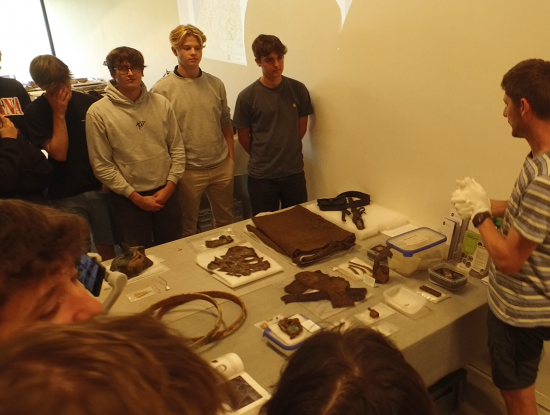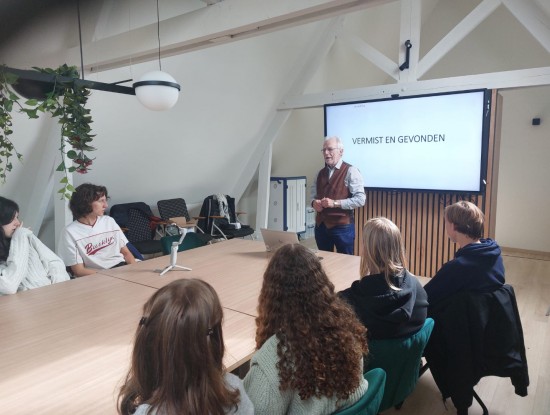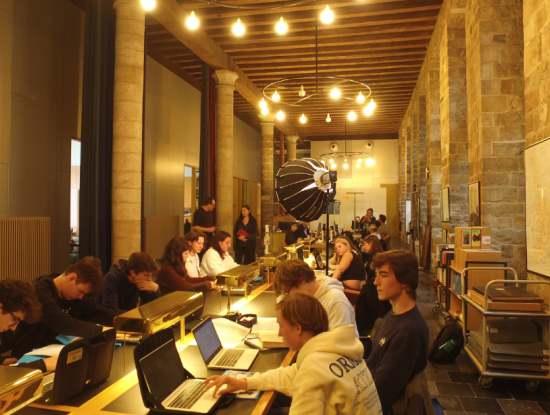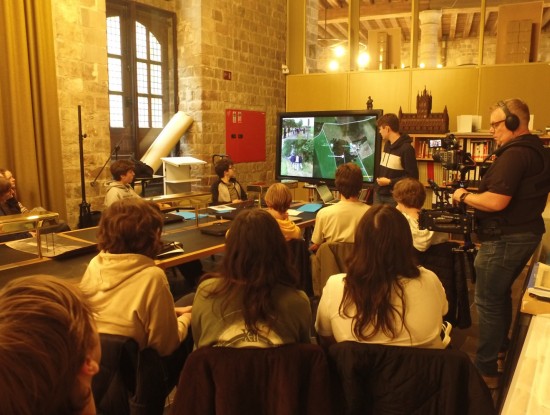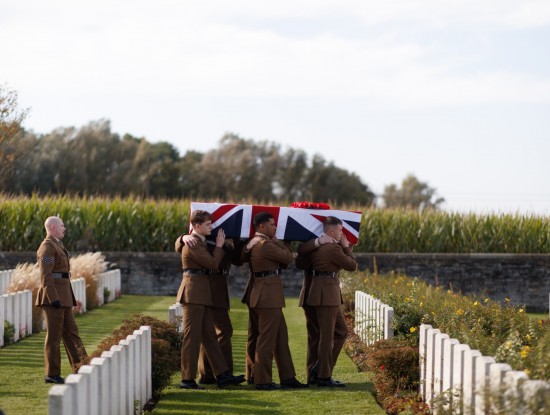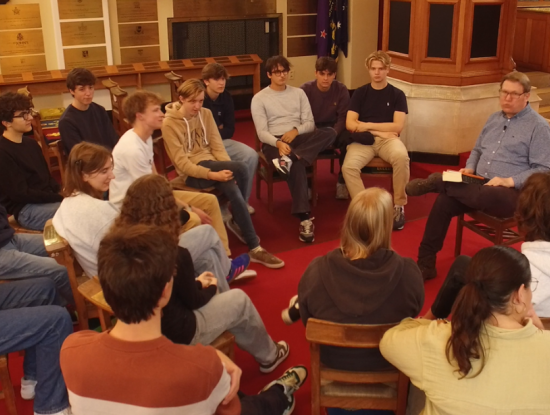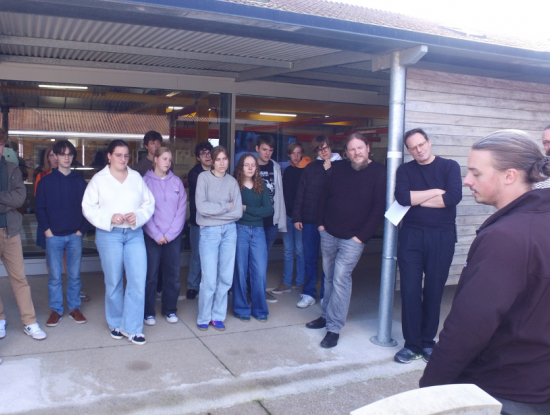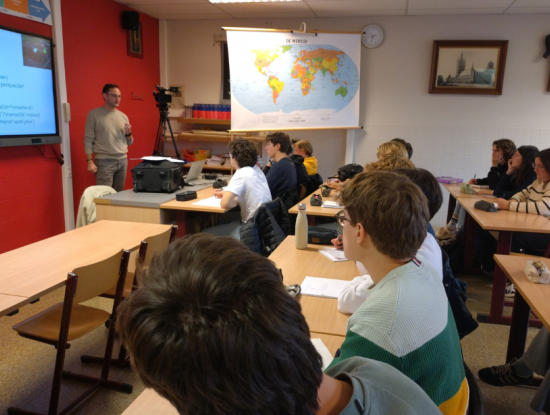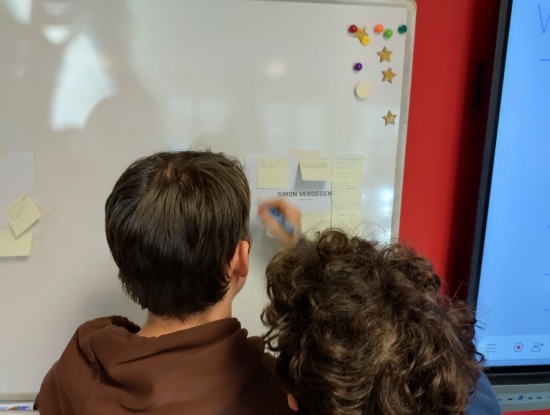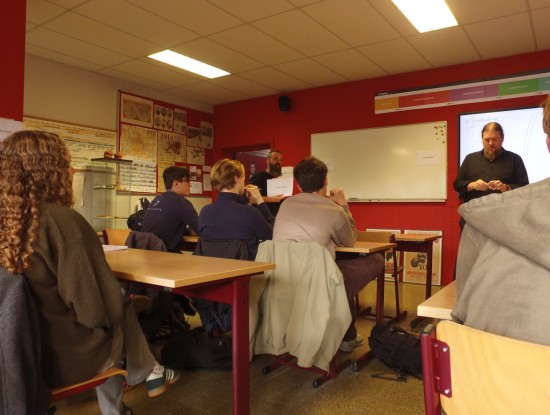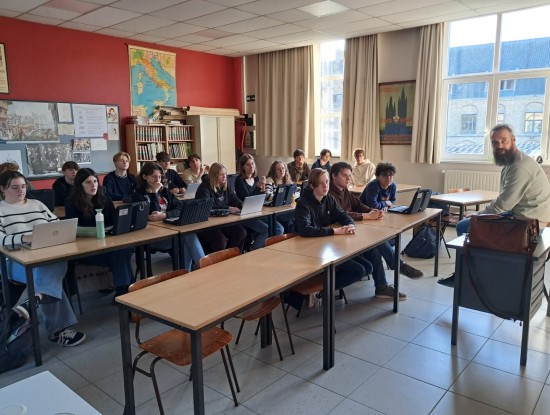General terms and conditions
Table of Contents:
Article 1 - Definitions
Article 2 - Identity of the entrepreneur
Article 3 - Applicability
Article 4 - The offer
Article 5 - The agreement
Article 6 - Right of withdrawal
Article 7 - Costs in case of withdrawal
Article 8 - Exclusion of the right of withdrawal
Article 9 - The price
Article 10 - Compliance and Warranty
Article 11 - Delivery and execution
Article 12 - Continuing performance: duration, termination and extension
Article 13 - Payment
Article 14 - Complaints procedure
Article 15 - Disputes
Article 16 - Additional or different provisions
Articele 17 - Intellectual property + copyright
Article 1 - Definitions
In these terms and conditions, the following terms shall have the following meanings:
- Grace period: The period within which the consumer can make use of his right of withdrawal;
- Consumer: the natural person who is not acting in the exercise of a profession or business and who enters into a distance contract with the entrepreneur;
- Day: calendar day;
- Extended duration transaction: a remote agreement related to a series of products and/or services, of which the obligation to supply and/or purchase is spread over a period of time;
- Durable data carrier: every means that enables the consumer or entrepreneur to store information that is addressed to him personally, in a way that allows for future consultation and unaltered reproduction of the stored information.
- Right of withdrawal: the possibility for the consumer to waive the distance contract within the cooling-off period;
- Entrepreneur: the natural or legal person who offers products and/or services to consumers from a distance;
- Distance contract: an agreement whereby sole use is made of one or more techniques for distance communication within the framework of a system organised by the entrepreneur for the distance sale of products and/or services, up to and including the moment that the agreement is concluded;
- Technique for distance communication: means that can be used for concluding an agreement, without the consumer and entrepreneur being together in the same room at the same time.
Article 2 - Identity of the Entrepreneur
Name of entrepreneur: AGB Musea Ieper
Acting under the name(s): In Flanders Fields Museum
Establishment & visiting address: Grote Markt 34, 8900 Ieper
Telephone number: 0032 57 23 92 20
Opening hours: Monday to Sunday from 10:00 to 17:00
E-mail address: webshopmusea@ieper.be
VAT identification number: BE 0759.387.858
Article 3 - Applicability
- These general terms and conditions apply to every offer made by the entrepreneur and to every distance contract that is concluded between the entrepreneur and the consumer.
- Before the remote agreement is concluded, the text of these general conditions will be made available to the consumer. If this is not reasonably possible, then before concluding the distance selling agreement, it shall be stated that the general terms and conditions can be inspected at the entrepreneur's premises and that they will be sent to the consumer free of charge as soon as possible, at the consumer's request.
- If the distance contract is concluded electronically, then, contrary to the previous paragraph, and before the distance contract is concluded, the text of these general terms and conditions will be made available to the consumer in electronic form in such a way that the consumer can easily store them on a durable data carrier. If this is not reasonably possible, before the agreement at a distance is concluded, it shall be indicated where the general conditions can be consulted electronically and that they will be sent to the consumer free of charge, at his request, either electronically or in some other way.
- In the event that specific product or service conditions apply in addition to these general terms and conditions, the second and third paragraphs apply by analogy and, in the event of conflicting general terms and conditions, the consumer can always invoke the applicable provision that is most favourable to him/her.
Article 4 - The offer
- If an offer has a limited period of validity or is made subject to conditions, this shall be explicitly stated in the offer.
- The offer contains a complete and accurate description of the products and/or services offered. The description is sufficiently detailed to allow the consumer to properly assess the offer. If the entrepreneur uses images, these are a true reflection of the products and / or services offered. Obvious mistakes or obvious errors in the offer are not binding on the entrepreneur.
- All images, specifications and data in the offer are indicative and can not lead to compensation or dissolution of the agreement.
- Images of products are a true representation of the products on offer. The Company cannot guarantee that the colours shown will exactly match the actual colours of the products.
- Each offer contains such information that it is clear to the consumer what rights and obligations are attached to accepting the offer. This concerns in particular:
- The price including taxes;
- the possible costs of shipment;
- the way in which the agreement will be brought about and which actions are required for this;
- whether or not the right of withdrawal is applicable;
- the method of payment, delivery and implementation of the agreement;
- the period for accepting the offer, or the period within which the entrepreneur guarantees the price;
- the size of the tariff for distance communication if the costs of using the technique for distance communication are calculated on a basis other than the regular basic tariff for the means of communication used;
- whether the agreement is archived after its conclusion and, if so, in what way it can be consulted by the consumer;
- the manner in which the consumer, before concluding the contract, can check the data provided by him in the context of the contract and, if desired, correct them;
- any other languages besides Dutch in which the contract can be concluded;
- the codes of conduct to which the trader is subject and the way in which the consumer can consult these codes of conduct electronically; and
- the minimum duration of the distance contract in the event of an extended transaction.
Article 5 - The agreement
- The agreement comes into being, subject to that which is stipulated in paragraph 4, at the moment at which the consumer accepts the offer and the conditions thereby stipulated have been fulfilled.
- If the consumer has accepted the offer electronically, the entrepreneur will immediately confirm receipt of electronic acceptance of the offer. As long as the receipt of this acceptance has not been confirmed by the entrepreneur, the consumer may dissolve the agreement.
- If the agreement is created electronically, the entrepreneur will take appropriate technical and organizational measures to protect the electronic transfer of data and he will ensure a secure web environment. If the consumer is able to pay electronically, the entrepreneur shall observe appropriate safety measures.
- The entrepreneur may - within legal limits - acquaint himself with the ability of the consumer to meet his payment obligations, as well as with all those facts and factors which are important for a responsible conclusion of the distance contract. If, on the basis of this investigation, the entrepreneur has good reason not to enter into the agreement, he is entitled to refuse an order or request while giving reasons, or to attach special conditions to the implementation.
- The entrepreneur will, together with the product or service, send the consumer the following information, in writing or in such a way that the consumer can store it in an accessible way on a durable data carrier:
- the visiting address of the Entrepreneur's business establishment where the Consumer may lodge complaints;
- the conditions on which and the way in which the Consumer may exercise the right of withdrawal, or a clear statement regarding the exclusion of the right of withdrawal;
- the information on guarantees and existing after-sales service;
- the data included in article 4, paragraph 3 of these conditions, unless the entrepreneur has already provided the consumer with these data before the implementation of the agreement;
- the requirements for cancelling the agreement if the agreement has a duration of more than one year or is indefinite.
- In case of a long-term transaction, the provision in the previous paragraph only applies to the first delivery.
- Every agreement is entered into under the suspensive conditions of sufficient availability of the products concerned.
Article 6 - Right of withdrawal
In case of delivery of products:
- When purchasing products, the consumer has the possibility of dissolving the contract, without giving reasons, during a period of 14 days. This cooling off period commences on the day after receipt of the product by the consumer or a previously designated by the consumer and the entrepreneur announced representative.
- During the cooling-off period the consumer will handle the product and packaging with care. He will only unpack or use the product to the extent necessary to judge whether he wishes to keep the product. If he exercises his right of withdrawal, he will return the product with all accessories and - if reasonably possible - in the original condition and packaging to the entrepreneur, according to the entrepreneur provided reasonable and clear instructions.
- If the consumer wishes to make use of his right of withdrawal, he is obliged to inform the entrepreneur of this within 14 days after receiving the product. After the consumer has made known that he wishes to make use of his right of withdrawal, the customer must return the product within 14 days. The consumer must prove that the delivered goods have been returned on time, for example by means of a proof of posting.
- If, at the end of the periods specified in sections 2 and 3, the customer has not indicated that he wishes to exercise his right of withdrawal or has not returned the product to the entrepreneur, the purchase is a fact.
In case of delivery of services:
- When services are supplied, the consumer has the possibility of dissolving the agreement without giving reasons during at least fourteen days, starting on the day of entering into the agreement.
- To make use of his right of withdrawal, the consumer will focus on the reasonable and clear instructions provided by the entrepreneur in the offer and / or at the latest on delivery.
Article 7 - Costs in case of withdrawal
- If the consumer makes use of his right of withdrawal, he will be responsible for the costs of return shipment at the most.
- If the consumer has paid an amount, the entrepreneur will refund this amount as soon as possible, but no later than 30 days after the return or withdrawal. Reimbursement will take place via the same payment method that was used by the consumer, unless the consumer explicitly agrees to a different payment method.
- If the product is damaged due to careless handling by the consumer, the consumer is liable for any reduction in value of the product.
Article 8 - Exclusion of the right of withdrawal
- The entrepreneur can exclude the consumer from the right of withdrawal as far as provided for in paragraph 2 and 3. The exclusion of the right of withdrawal is only valid if the entrepreneur has clearly stated this in the offer, at least in good time before concluding the agreement.
- Exclusion of the right of withdrawal is only possible for products
- that have been created by the entrepreneur in accordance with the specifications of the consumer;
- that are clearly of a personal nature
- that cannot be returned due to their nature
- that spoil or age quickly;
- whose price depends on fluctuations in the financial market on which the entrepreneur has no influence;
- for single newspapers and magazines
- for audio- and video-recordings and computer software of which the consumer has broken the seal.
- Exclusion of the right of withdrawal is only possible for services
- concerning accommodation, transport, restaurant business or leisure activities to be performed on a certain date or during a certain period
- of which the delivery has started with the express consent of the consumer before the period for reflection has expired;
- relating to betting and lotteries.
Article 9 - The price
- During the validity period mentioned in the offer, the prices of the products and/or services offered will not be increased, except for price changes as a result of changes in VAT rates.
- Contrary to the previous paragraph, the entrepreneur may offer products or services whose prices are subject to fluctuations in the financial market that are beyond the entrepreneur's control, at variable prices. The offer shall state this link with fluctuations and the fact that any prices mentioned are recommended prices.
- Price increases within 3 months after the conclusion of the agreement are only allowed if they are the result of statutory regulations or provisions.
- Price increases from 3 months after the conclusion of the agreement are only allowed if the entrepreneur has stipulated it and:
- they are the result of statutory regulations or stipulations; or
- the consumer is authorized to terminate the contract on the day on which the price increase takes effect.
- The prices mentioned in the offer of products or services are subject to the applicable VAT regulations.
- All prices are subject to misprints and typesetting errors. No liability will be accepted for the consequences of misprints and typesetting errors. In the event of printing and typesetting errors, the entrepreneur is not obliged to deliver the product according to the incorrect price.
Article 10 - Compliance and Warranty
- The entrepreneur guarantees that the products and / or services meet the contract, the specifications stated in the offer, the reasonable requirements of reliability and / or usability and on the date of the conclusion of the agreement existing legal provisions and / or government regulations. If agreed, the entrepreneur also guarantees that the product is suitable for other than normal use.
- A guarantee provided by the entrepreneur, manufacturer or importer does not affect the legal rights and claims that the consumer, based on the agreement, can assert against the entrepreneur.
- Any defects or wrongly delivered products should be reported to the entrepreneur in writing within 4 weeks after delivery. The products must be returned in the original packaging and in new condition.
Article 11 - Delivery and implementation
- The entrepreneur will take the greatest possible care when receiving and implementing orders of products and in assessing applications for the provision of services.
- The place of delivery is the address that the consumer has made known to the company.
- Subject to what is stated in article 4 of these general terms and conditions, the company shall execute accepted orders with convenient speed but at least within 30 days unless a longer delivery period has been agreed. If the delivery has been delayed, or if an order cannot be filled or can be filled only partially, the Consumer shall be informed about this within 30 days after the order was placed. In that case, the consumer has the right to dissolve the agreement free of charge and the right to possible compensation.
- In case of dissolution in accordance with the previous paragraph, the entrepreneur shall return the amount paid by the consumer as soon as possible, but at the latest within 30 days after dissolution.
- If delivery of an ordered product turns out to be impossible, the entrepreneur shall make an effort to provide a replacement article. The fact that a replacement article is being delivered will be communicated in a clear and comprehensible manner, at the latest upon delivery. The right of withdrawal cannot be excluded with replacement articles. The cost of any return shipment shall be borne by the entrepreneur.
- The risk of damage and/or loss of products rests with the entrepreneur up to the moment of delivery to the consumer or a previously designated and notified to the entrepreneur representative, unless otherwise expressly agreed.
Article 12 - Continuing transactions: duration, termination and extension
Termination
- The consumer can terminate an agreement entered into indefinitely, which extends to the regular delivery of products (including electricity) or services at any time, subject to the agreed termination rules and a notice of up to one month.
- The consumer may contract for a definite period and that extends to the regular delivery of products (including electricity) or services, at any time at the end of the fixed term denounce the applicable termination rules and a notice not exceeding one month.
- The consumer can terminate the agreements referred to in the previous paragraphs
- terminate them at all times and not be limited to termination at a specific time or during a specific period;
- at least terminate them in the same manner as they were concluded by him;
- always terminate them with the same period of notice as the entrepreneur has stipulated for himself.
Extension
- An agreement that has been entered into for a definite period of time and that extends to the regular supply of products (including electricity) or services, may not be tacitly extended or renewed for a definite period of time.
- Notwithstanding the preceding paragraph, a fixed-term contract that has been concluded for the regular supply of daily or weekly newspapers or magazines may be tacitly renewed for a maximum period of three months, if the consumer has the right to terminate this renewed contract before the end of the renewal period, with a period of notice that does not exceed one month.
- A fixed-term contract that has been concluded for the regular supply of products or services may only be automatically prolonged for an indefinite period of time if the consumer has at all times the right to terminate, with a period of notice that does not exceed one month and a period that does not exceed three months if the contract is to regularly supply daily or weekly newspapers or magazines, but less than once a month.
- An agreement with a limited term for the regular supply, by way of introduction, of daily or weekly newspapers and magazines (trial or introductory subscription) shall not be tacitly continued and shall end automatically at the end of the trial or introductory period.
Duration
- If a contract lasts more than one year, after one year the consumer may at any time terminate with a notice of up to one month, unless the reasonableness and fairness resisting the termination before the end of the agreed term.
Article 13 - Payment
- As far as no other date has been agreed, sums payable by the consumer should be paid within 7 days after the start of the reflection period as referred to in article 6 paragraph 1. In case of an agreement for the provision of a service, this period shall start after the consumer has received the confirmation of the agreement.
- The consumer has the duty to inform the entrepreneur immediately of any inaccuracies in payment details provided or mentioned.
- In case of non-payment on the part of the consumer, and subject to legal restrictions, the entrepreneur is entitled to charge the consumer for any reasonable costs made known to the consumer in advance.
Article 14 - Complaints procedure
- The entrepreneur shall have a sufficiently publicised complaints procedure and shall handle the complaint in accordance with this complaints procedure.
- Complaints about the implementation of the agreement must be submitted to the entrepreneur within 7 days, fully and clearly described, after the consumer has found the defects.
- Complaints submitted to the entrepreneur shall be answered within a period of 14 days, calculated from the date of receipt. If a complaint requires a foreseeably longer processing time, the entrepreneur shall respond within 14 days with a notice of receipt and an indication of when the consumer can expect a more detailed answer.
- If the complaint cannot be solved in mutual consultation, a dispute arises that is subject to the dispute settlement procedure.
- In case of complaints, a consumer should first turn to the entrepreneur. It is also possible to register complaints via the European ODR platform (http://ec.europa.eu/odr).
- A complaint shall not suspend the Entrepreneur's obligations, unless the Entrepreneur indicates otherwise in writing.
- If the entrepreneur finds a complaint justified, he will, at his discretion, either replace or repair the delivered products free of charge.
Article 15 - Disputes
- Only Belgian law applies to agreements between the entrepreneur and the consumer to which these general terms and conditions apply.
Article 16 - Additional or different provisions
Additional provisions or provisions that deviate from these general terms and conditions, may not be to the detriment of the consumer and should be recorded in writing or in such a way that the consumer can be stored in an accessible manner on a durable data carrier.
Article 17: Intellectual Property + Copyright
- All Intellectual Property rights related to (advertising) statements of inflandersfields.be rest with the In Flanders Fields Museum.
- The information available on inflandersfields.be can only be used, copied, distributed in adapted form for information purposes, and only after obtaining the written and explicit permission of the In Flanders Fields Museum.
- The Customer and (other) users of the web shop acknowledge these rights and guarantee that they will refrain from any infringement on these rights, including the making of copies of the web shop other than technical copies required for the use of the web shop. (loading and display).
